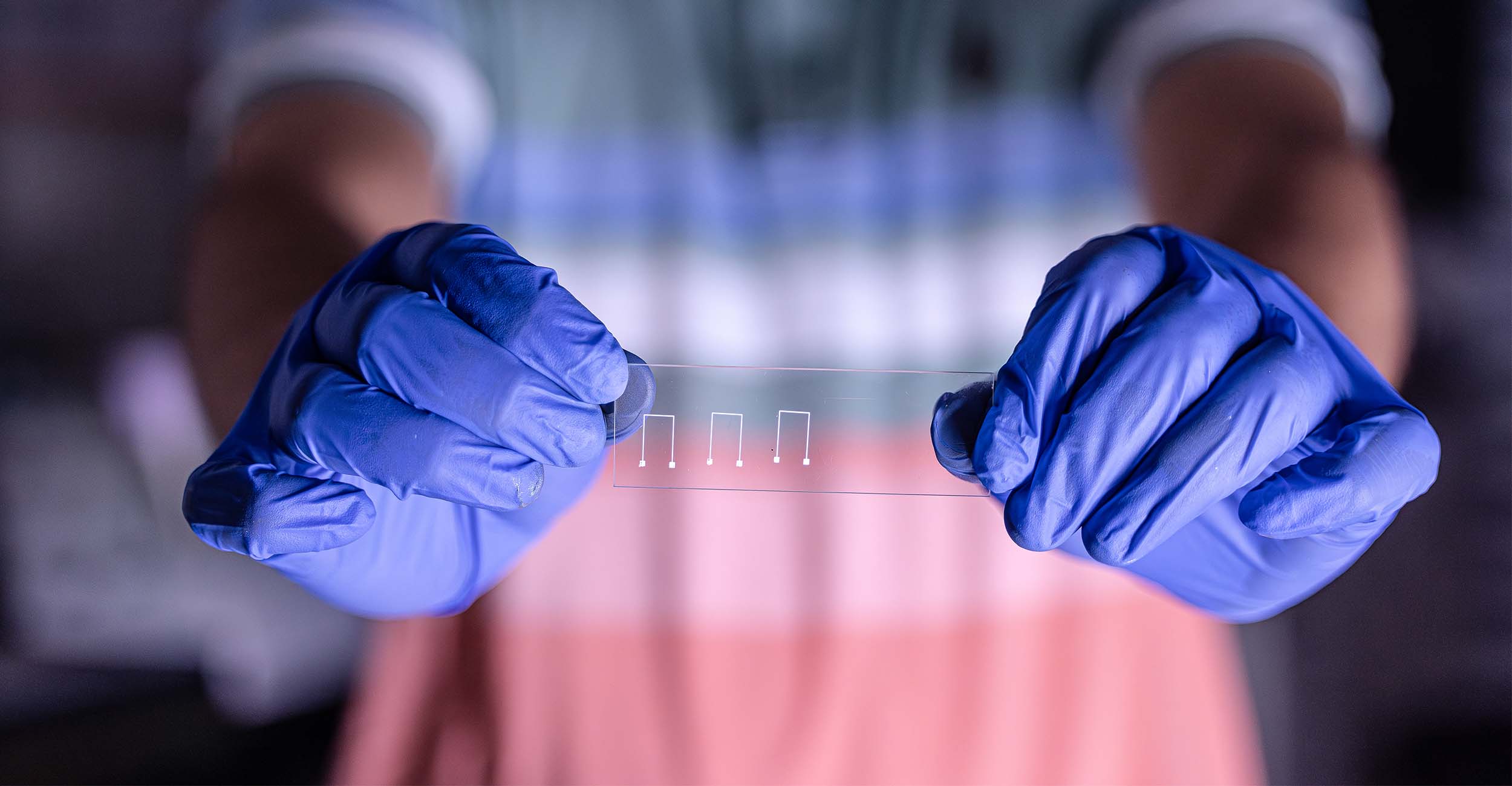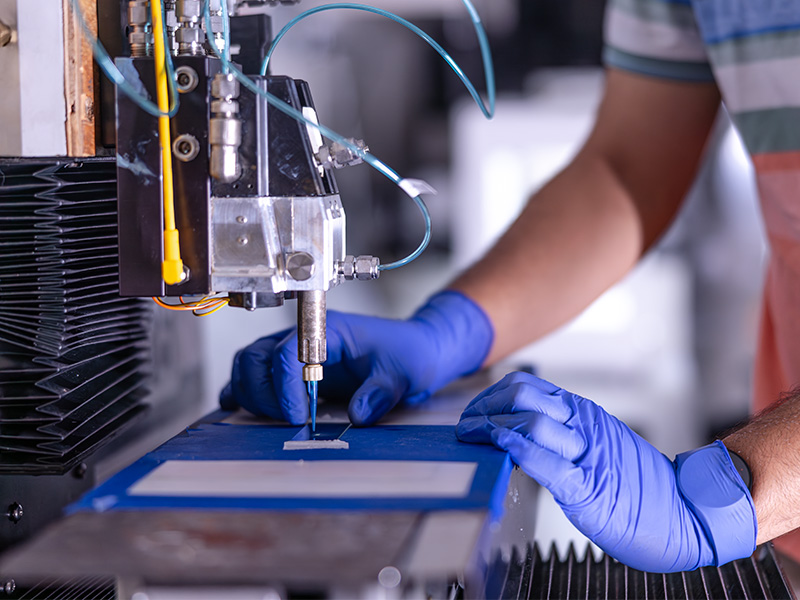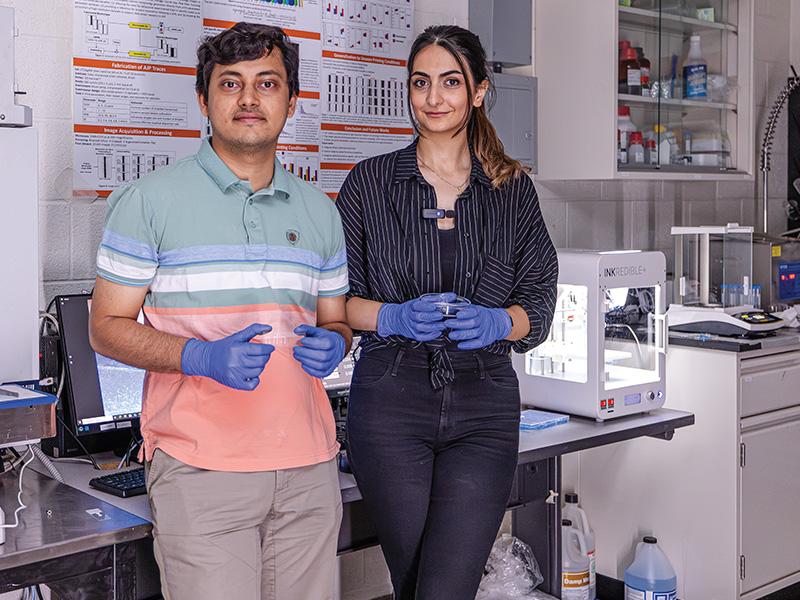
Breaking the Mold: OSU' s Advanced Materials and Additive Manufacturing Lab reshapes the future of electronics, health care and aerospace
Thursday, October 2, 2025
Media Contact: Kristi Wheeler | Manager, CEAT Marketing and Communications | 405-744-5831 | kristi.wheeler@okstate.edu
The College of Engineering, Architecture and Technology is a leader in research that shapes our state, nation and the rest of the world — from innovations that save lives to technological breakthroughs.
A strong example of this is the Advanced Materials and Additive Manufacturing Laboratory.
It is under the direction of Dr. Srikanthan Ramesh, an assistant professor in the School of Industrial Engineering and Management. He and a team of two undergraduate students, two master’s students and two doctoral students conduct research that combines functional materials and additive manufacturing, resulting in the development of custom-fabricated materials.
Students are actively involved as they contribute to experimental designs, operate equipment, analyze data and study results. Undergraduate students can join a project in progress and gain important hands-on experience and exposure to high-level research.
Graduate students lead project development and are mentors to undergraduates. Taking part in these research projects gives students valuable experience for future roles as researchers, working in industry or advanced studies.

The team begins with functional materials that conduct electricity, support biological activity or respond to external stimuli, among others. These materials are then arranged layer-by-layer into final products using additive manufacturing.
This is accomplished through a digital, layer-by-layer design process where the team controls the geometry and placement of the materials. The team has become adept at manufacturing skin and lung tissues for biological studies as well as printed electronics.
The in-vitro bioprinted tissue models are tailored to the needs of specific cell types and experimental designs.
With printed electronics, sensors and conductive features are fabricated on both flexible and irregular surfaces. These electronics require custom designs to match the needs of specific devices.
“In both areas, we investigate how materials behave during the printing process and how those interactions influence the structure and function of the final product,” Ramesh said. “This understanding of the process-structure-function relationship is central to improving reliability, enabling new capabilities, and advancing the use of AM in biomedical and electronic applications.”
The digital design process is an advantage over traditional manufacturing by not requiring molds, tooling or subtractive steps. It allows for more freedom of design as well as the ability to utilize complex geometry, internal features and material gradients that are near impossible to achieve in traditional methods.
Customization also allows for products to be tailored in a way that does not require additional costs or complexity, which is crucial in bio-fabrication and creating electronics using additive materials.
“Traditional methods are typically optimized for mass production of identical parts and rely on fixed tooling, making customization time-consuming and expensive,” Ramesh said.
Additive manufacturing provides advantages over traditional methods. One area where this has been the case is in the manufacturing of medical devices such as hearing aids and dental aligners, which are commonly 3D printed because those devices need to be customized for each patient. However, the benefits of additive manufacturing extend well beyond health care and are broadly applicable across industries that require the production of complex physical components.
There have also been breakthroughs using this type of manufacturing in the aerospace industry. The ability to craft complex aircraft components proves its viability.
“Additive manufacturing enables cost-effective production of customized products directly from digital scans, offering rapid design-to-part transitions, though the printing process itself is not necessarily fast, as is often misunderstood,” Ramesh said. “The technology is also making a major impact in aerospace applications, where lightweight, complex parts can be printed with minimal waste and reduced need for assembly. This not only cuts costs but also improves performance by enabling designs that aren’t possible with traditional manufacturing.”

One of the most unique things about additive manufacturing is the ability to replicate the process with different sizes of objects. Small-scale efforts result in microscopic features such as microscale sensors and cell-laden tissues for biological studies. The same fundamental method of layering materials works for creating larger-scale products such as entire buildings or structural components.
With so many areas where additive manufacturing can make beneficial changes, many industries may continue to operate in ways that take advantage of this emerging technology.
“Looking ahead, we expect to see growing use of additive manufacturing in sectors such as automotive, aerospace, energy, health care, defense, construction, consumer products and electronics, especially as new materials, multi-material systems and large-scale printing technologies continue to evolve,” Ramesh said.
Photos: Ellie Piper
Story by: Tanner Holubar | IMPACT Magazine
